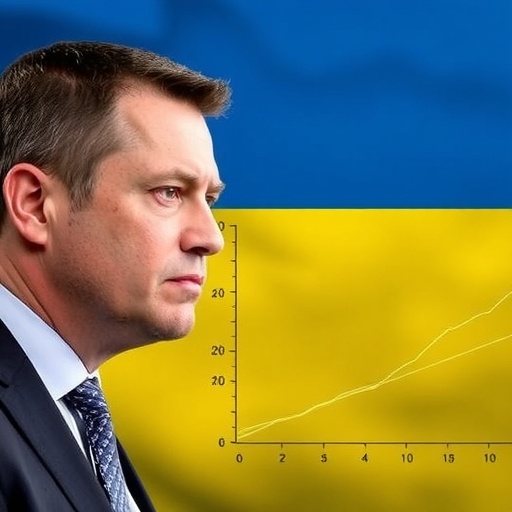Kyiv Allies Led by Keir Starmer Vow to Erase Russian Oil and Gas from Global Markets Amid Ukraine Crisis
In a groundbreaking alliance that could reshape global energy dynamics, leaders from Kyiv‘s supporting nations, spearheaded by UK Prime Minister Keir Starmer, have pledged to systematically remove Russian oil and gas from the international market. This bold commitment, announced at a high-stakes summit in London, intensifies sanctions against Russia while ramping up military aid to Ukraine, signaling an unyielding stance against Moscow’s invasion that has raged for over two years.
The announcement comes at a critical juncture, as Ukraine faces escalating threats from Russian forces in the east. Starmer, addressing a coalition of European and North American allies, declared, “We will not rest until Russian oil and gas are relics of a bygone era in global trade. This is about more than energy—it’s about starving the aggressor’s war machine.” The plan outlines coordinated efforts to enforce stricter sanctions, disrupt supply chains, and accelerate the transition to alternative energy sources, potentially slashing Russia’s fossil fuel revenues by up to 50% within the next year, according to preliminary estimates from the International Energy Agency (IEA).
This move builds on existing measures but introduces unprecedented unity among Kyiv‘s backers. Since Russia’s full-scale invasion of Ukraine in February 2022, Western nations have imposed waves of sanctions, freezing over $300 billion in Russian central bank assets and banning imports of Russian oil in the EU and UK. Yet, evasion tactics like shadow fleets and third-country rerouting have kept billions flowing to the Kremlin. Today’s pledge aims to close those loopholes, with allies committing to shared intelligence and joint enforcement operations.
Starmer’s Summit: Forging a United Front Against Russian Energy Dominance
UK Prime Minister Keir Starmer took center stage at the London Energy Security Summit, where representatives from the G7, EU, and key Indo-Pacific partners gathered to hammer out the anti-Russian oil strategy. The event, hosted at Lancaster House, saw Starmer emphasize the moral imperative: “Every barrel of Russian oil sold funds the bombs falling on Ukraine. We owe it to the people of Kyiv to act decisively.”
Attendees included Ukrainian President Volodymyr Zelenskyy, who joined virtually from Kyiv, praising the initiative as “a lifeline for our defense.” Zelenskyy highlighted how Russian energy exports have generated over $400 billion since the war began, per UN data, much of which sustains military operations. The summit’s communiqué details a phased approach: immediate caps on Russian oil prices enforced globally, followed by outright bans on insurance and shipping services for Russian vessels.
Behind the scenes, negotiations were intense. Sources close to the talks reveal that France and Germany, historically reliant on Russian gas via pipelines like Nord Stream (now defunct), pushed for transitional measures to avoid domestic energy shortages. However, Starmer’s diplomatic maneuvering secured buy-in, with the UK pledging an additional £2.5 billion in sanctions enforcement technology, including AI-driven tracking of oil tankers. This unity is surprising given past divisions—recall the 2022 delays in EU sanctions over Hungary’s vetoes—but reflects a hardening resolve as Russian advances near key Ukrainen cities like Kharkiv.
Experts note the emotional weight of the moment. Dr. Elena Petrova, an energy analyst at the Oxford Institute for Energy Studies, told reporters, “Starmer’s leadership has injected urgency into a fragmented response. This isn’t just policy; it’s a narrative of solidarity with Ukraine.” The summit also featured poignant testimonials from Ukrainian refugees in the UK, underscoring the human cost of Russia’s resource-fueled aggression.
Dissecting the Sanctions Arsenal: From Price Caps to Shadow Fleet Takedowns
The heart of the pledge lies in an expanded sanctions regime designed to eviscerate Russian oil revenues. Building on the G7’s 2022 price cap of $60 per barrel, allies now aim for a dynamic mechanism that adjusts in real-time based on market evasion. “We’ll use satellite imagery and blockchain tracing to expose every loophole,” explained US Treasury Secretary Janet Yellen in a post-summit briefing.
Key components include:
- Maritime Blacklisting: A unified blacklist of over 500 Russian-linked vessels, denying them access to Western ports, insurance from Lloyd’s of London, and satellite navigation services. This targets the ‘shadow fleet’—aging tankers rerouting Russian oil to India and China, which accounted for 80% of Russia’s seaborne exports last year, per IEA figures.
- Financial Chokepoints: Freezing assets in third countries like Turkey and the UAE, where Russian firms have set up shell companies. The coalition will impose secondary sanctions on banks facilitating these deals, potentially disrupting $100 billion in annual trades.
- Gas Pipeline Shutdowns: Accelerating the phase-out of remaining Russian gas flows to Europe, now down to 15% from pre-war levels. New infrastructure investments, totaling €50 billion from the EU, will prioritize LNG terminals in Poland and the Baltics.
Statistics paint a stark picture: Russia’s energy exports plummeted 40% in 2023 due to initial sanctions, yet revenues held steady at $280 billion through higher prices. The new plan projects a further 30-50% drop by 2025, crippling funding for the Ukraine war. Keir Starmer underscored this in his closing remarks: “These sanctions will bite harder than any battlefield defeat.”
Challenges abound, however. Russia’s pivot to Asia means Russian oil now flows eastward via the Eastern Siberia-Pacific Ocean pipeline, supplying 2 million barrels daily to China. Allies plan diplomatic outreach to Beijing, offering trade incentives for compliance, but tensions with major importers could strain global relations.
Military Boost for Kyiv: How Energy Sanctions Translate to Frontline Support
Beyond economics, the pledge ties directly to bolstering Ukraine‘s defenses. In a surprising linkage, proceeds from seized Russian oil assets—estimated at $50 billion—will fund a new military aid package worth $60 billion. “This is Russia’s money turned against them,” Starmer affirmed, echoing calls from Kyiv for using frozen funds.
The aid surge includes advanced systems: 100 additional Leopard tanks from Germany, F-16 jets from the Netherlands, and UK’s Storm Shadow missiles in greater numbers. Ukrainian Defense Minister Rustem Umerov stated, “With allies cutting off Russian oil, we can push back on the ground. This is the support Ukraine has longed for.” Since 2022, Western aid has totaled $150 billion, but delivery delays have hampered efforts; the new framework promises streamlined logistics via a dedicated NATO hub in Poland.
Contextually, this comes as Russian forces intensify assaults in Donetsk, capturing villages and straining Ukrainian lines. Intelligence reports suggest Moscow’s summer offensive relies on drone swarms funded by energy windfalls. By targeting Russian oil, allies aim to reduce production capacity—Russia’s output hit 10.5 million barrels per day in 2023, per OPEC—thereby limiting fuel for tanks and aircraft.
Emotional narratives from the front amplify the stakes. A Kyiv-based journalist embedded with troops shared, “Soldiers hear about these sanctions and feel hope. It’s not abstract—it’s fewer shells overhead.” Yet, critics warn of escalation risks, with Russia potentially retaliating via cyberattacks on European grids, as seen in past hybrid warfare.
Global Ripples: Energy Markets Brace for a Post-Russian Era
The ramifications extend far beyond Ukraine, jolting global energy markets. With Russian oil comprising 10% of world supply, its removal could spike prices to $100 per barrel short-term, per Bloomberg analysts, fueling inflation in vulnerable economies. However, long-term benefits include accelerated green transitions: the EU’s REPowerEU plan, now supercharged with $200 billion in investments, targets 45% renewable energy by 2030.
Consumer impacts vary. In the UK, Starmer assured households of subsidies to offset rises, drawing from a £10 billion energy resilience fund. Across the Atlantic, US shale producers stand to gain, boosting output by 1 million barrels daily to fill gaps. Surprisingly, this could benefit developing nations; India, a top Russian oil buyer, may access discounted Western supplies, easing its 7% GDP growth pressures.
Environmental angles add resonance. Greenpeace hailed the move: “Phasing out Russian oil aligns with climate goals, reducing emissions by 1.5 gigatons annually if sustained.” Yet, the shift risks stranded assets in Siberia, where Russia’s untapped reserves rival Saudi Arabia’s. Geopolitical surprises emerge too—potential alliances with Gulf states for alternative supplies could reshape OPEC dynamics.
Forward-looking, this pledge sets the stage for a multipolar energy world. As sanctions tighten, Russia may accelerate de-dollarization, trading in yuan, but isolation looms. For Ukraine, sustained pressure could force negotiations; experts like Fiona Hill predict a weakened Moscow by 2025, opening paths to peace. Starmer’s vision: “A world where energy powers progress, not war.” Allies now eye implementation summits in Brussels, with monitoring committees to track progress quarterly. The battle for Kyiv‘s future—and global stability—intensifies.









